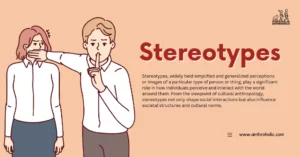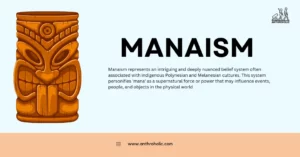AI Answer Evaluation Platform Live Now. Try Free Answer Evaluation Now
Elite Overproduction
It’s a scene that defines the modern climb to success: a university graduation hall, filled with the brightest minds of a generation. They are armed with degrees, fortified by internships, and burdened by staggering debt, all accumulated in the fervent belief that talent and hard work are the guaranteed currency of upward mobility. Yet, as they step out into the world, they enter a brutal contest where thousands of equally qualified candidates fight for a handful of prestigious positions in law firms, tech giants, government offices, and university halls. For the vast majority, the promise of a seat at the table will curdle into a lingering sense of frustration, resentment, and betrayal.

This scenario isn’t just a collection of individual disappointments; it’s the primary symptom of a powerful social force that may explain the instability and polarization of our current era: Elite Overproduction.
The term, popularized by the historical scientist Peter Turchin, describes a simple but dangerous imbalance. It occurs when a society produces far more highly-credentialed, ambitious individuals (elite aspirants) than it has actual elite positions for them to fill. Turchin, a pioneer in the field of “cliodynamics”, which applies mathematical modeling to the sweep of human history, didn’t stumble upon this idea by accident. By analyzing centuries of data from collapsing empires and revolutionary states, he identified a recurring pattern: periods of intense social and political upheaval are often preceded by a glut of would-be elites competing for a scarcity of power.
This surplus of ambition creates a zero-sum game where one person’s gain is another’s loss, making the competition for power increasingly vicious. The problem, Turchin argues, isn’t just economic inequality, but something more fundamental: a structural deficit of opportunity for those who were promised influence and status.
The Math of Mayhem – How Elite Overproduction Works
To understand why elite overproduction acts like a political acid, eroding social cohesion and stability, we first need to look at its underlying mechanics. The process isn’t driven by emotion or ideology alone, but by a cold, structural imbalance between supply and demand in the marketplace of power.
First, it’s crucial to define what “elite” means in this context. It is not simply the wealthy 1%; it is the small percentage of the population holding positions of significant influence. These are the decision-makers: the senators and cabinet secretaries, the Fortune 500 CEOs, the university presidents, the top media editors, and the senior partners at influential law firms. They are the people who steer the ship of state and society.
The crisis begins with the supply of elite aspirants, which in recent decades has transformed from a steady stream into a tidal wave. This flood is fueled by three main drivers:
- Mass Higher Education: Universities, once reserved for a tiny fraction of the population, now produce millions of graduates annually. The number of law degrees and PhDs, specifically, has exploded. Society created a vast machine for minting elite credentials, flooding the market with individuals who have every reason to believe they are qualified to lead.
- Soaring Wealth Inequality: As the rewards for reaching the very top have become astronomically high, the incentive to join the elite has intensified. When a small number of people control a vast share of a nation’s wealth, it creates a powerful gravitational pull, encouraging countless others to enter the hyper-competitive race for a top spot.
- The Promise of Meritocracy: Our social contract is built on the idea that talent and hard work, validated by credentials, will be rewarded. This promise motivates millions to invest time and money into their education, entering the competition in good faith.
The problem arises on the demand side, where the number of genuine elite positions remains stubbornly fixed. A country only has one president, 100 senators, and a few hundred members of congress. The number of CEOs at top corporations or presidents of major universities grows very little, if at all. This creates a brutal game of musical chairs, where every year, more and more highly qualified players are fighting for the same, limited number of seats.
The inevitable result is a dramatic intensification of intra-elite competition. When the odds of success are low, the rules of the game begin to fray. Aspirants who would have once followed a conventional path to power become more willing to bend norms, demonize opponents, and embrace radical tactics to gain an edge. This isn’t necessarily because they are immoral people; it’s because the system is putting them under immense pressure. The desperate struggle among the elites themselves is the first crack in a society’s foundation, signaling that a period of dangerous instability is on the horizon.
The Birth of the Counter-Elite
The most dangerous consequence of elite overproduction is not the internal squabbling it creates, but what it does to the losers. These are not people who simply accept their fate and quietly assimilate into the middle class. They are highly educated, ambitious, and credentialed individuals who played by the rules of the meritocratic game and lost. Their deep-seated sense of frustration and disenfranchisement doesn’t just fade away, it metastasizes into a powerful opposition to the very system that rejected them.
This is how a “counter-elite” is born.
The psychological journey is predictable. An aspirant who spends years and a small fortune earning a law degree or a PhD, only to find no place for them in the halls of power, rarely concludes they weren’t good enough. Instead, they begin to believe the system itself is corrupt, rigged, and fundamentally unjust. They see the established elites not as winners of a fair contest, but as a decadent and undeserving class clinging to power through nepotism and gatekeeping.
What makes this group so potent is that they possess the same skills as the ruling class: they are articulate, skilled in organization and communication, and understand the levers of political and social power. But instead of using their talents to uphold the system, they weaponize them against it. The lawyer who couldn’t find a partnership at a top firm becomes a radical activist, launching lawsuits against the state. The academic who was denied tenure writes blistering critiques of the establishment, building a following online. The would-be politician who lost a primary race becomes a populist firebrand, vowing to burn the old order down.
Crucially, the counter-elite do not operate in a vacuum. To gain real power, they need an army. They find it in the vast, simmering discontent of the general population. While the elites are busy fighting each other, the masses are often struggling with their own set of grievances, stagnant wages, cultural anxieties, and a feeling of being ignored. The counter-elite are uniquely positioned to tap into this wellspring of anger. They become the articulate voice for the voiceless, channeling widespread frustration into a coherent and powerful political movement.
This alliance between a frustrated faction of would-be elites and a disgruntled populace is the classic recipe for political upheaval. The counter-elite provide the leadership, strategy, and ideology, while the masses provide the numbers and the raw energy for a revolt against the status quo. This is not a new phenomenon; it is a recurring pattern that has unfolded at critical junctures throughout history.
Echoes in History – Turchin’s Case Studies
The theory of elite overproduction is not just an abstract model; it is a pattern etched into the historical record. Long before the modern era of university degrees and student debt, societies have repeatedly stumbled into this same demographic trap. Looking back at these historical precedents reveals the theory’s predictive power and serves as a stark warning. In case after case, a surplus of elite aspirants acted as the political tinder, and a spark of popular discontent was all that was needed to ignite a conflagration.
One of the most potent examples comes from the fall of the Roman Republic. In the 2nd and 1st centuries BCE, the number of wealthy aristocratic families grew, all competing for a rigidly fixed number of top positions like consul and praetor. With legitimate paths to power clogged, ambitious men like Marius, Sulla, Pompey, and Julius Caesar bypassed traditional rules. They created private armies loyal only to them, used political violence as a tool, and ultimately plunged the Republic into a century of brutal civil wars from which it never recovered. The state was torn apart not by foreign enemies, but by the ferocious, zero-sum competition among its own elites.
Centuries later, 18th-century France faced a similar dynamic in the lead-up to its revolution. The French monarchy had encouraged the expansion of universities, creating a large class of educated lawyers, administrators, and intellectuals. Yet, the highest echelons of power in the military, the church, and the state were reserved almost exclusively for the old nobility. This created a massive pool of frustrated and underemployed bourgeois talent. Men like Robespierre, Danton, and Desmoulins, all lawyers, were the quintessential counter-elites. They had the intellectual training to critique the injustices of the Ancien Régime and the ambition to lead a new one. When the fiscal crisis of the state provided an opportunity, they seized it, becoming the leaders and ideologues of the French Revolution.
Even American history offers a powerful case study. Peter Turchin points to the decades before the American Civil War. Between 1830 and 1860, the number of college graduates and lawyers in the country expanded at a rate that far outstripped population growth. The competition for a limited number of seats in Congress and other influential positions became incredibly fierce. This intense pressure contributed to the breakdown of political norms, the rise of extreme pro-slavery and abolitionist factions, and the death of compromise. The political system, unable to absorb the ambitions of so many aspirants, fractured along regional lines, making a violent conflict almost inevitable.
In each of these pivotal moments, the story is the same: a society produced too many claimants for power, the competition shattered the social contract, and the old order was swept away in a tide of instability and violence.
The Overproduction Crisis Today
While the contexts have changed from imperial senates and royal courts, the fundamental dynamics of elite overproduction are echoing loudly throughout the 21st century. The signs are not hidden in obscure data; they are visible in our universities, our political battles, and our digital lives. The modern world has created new and potent ways to generate elite aspirants, leading to a level of intra-elite competition that defines our era.
The “PhD Glut” and the Adjunct Crisis: Perhaps the clearest modern example is in academia. For decades, universities have produced a steadily increasing number of PhDs, the highest credential in the system. Yet, the number of secure, tenure-track professorships has remained flat or even declined. This has created a massive surplus of highly intelligent, specialized experts who are forced into a precarious existence as low-paid, non-tenured adjuncts or must leave the field entirely. This cohort of “frustrated academics” represents a quintessential counter-elite: trained at the highest level to be institutional leaders, but systematically denied that role, they often become some of the sharpest critics of the very system that created them.
Politics, Law, and Media: The path to political and media influence is similarly clogged. Law schools graduate tens of thousands more lawyers each year than there are jobs for them, let alone positions of real power. A similar dynamic exists for graduates in journalism, public policy, and political science. Washington D.C. and other power centers are flooded with ambitious young people competing for a tiny number of influential staff positions, think tank fellowships, or on-air roles. Those who fail to secure a spot in the establishment don’t simply vanish; they often find a niche in the burgeoning ecosystem of hyper-partisan media, becoming influencers and commentators who build their careers on attacking the “mainstream” they were unable to join.
The Tech “Unicorn” Lottery: Silicon Valley’s startup culture can be viewed as another form of elite competition. The promise of becoming the next Mark Zuckerberg or Elon Musk lures thousands of brilliant founders into a brutal contest for venture capital and market dominance. While the rewards for the winners are astronomical, the vast majority of startups fail. This process creates a constant churn of highly capable and risk-tolerant individuals who have experienced the sharp end of a winner-take-all system. This “move fast and break things” ethos, born of intense competition, bleeds into the wider culture, normalizing a disregard for established norms and institutions.
Social Media as the Great Accelerant: Tying all these modern examples together is the transformative power of social media. In previous eras, a frustrated counter-elite had to struggle to be heard, relying on printing presses or small gatherings. Today, platforms like X (formerly Twitter), YouTube, and TikTok provide a direct, unfiltered channel to the masses. They allow a rejected academic, a failed political candidate, or a disgruntled journalist to bypass traditional gatekeepers and build a massive following. Social media gives every member of the counter-elite a potential megaphone, dramatically accelerating the speed at which their disillusionment can be weaponized into a political movement, turning the slow burn of elite overproduction into a raging fire.
Consequences and Societal Impact
The unchecked pressure of elite overproduction doesn’t remain a contained problem among the ambitious. Like stress fractures in a building’s foundation, the consequences spread outward, weakening the entire social and political structure. The bitter competition among would-be elites and the rise of a resentful counter-elite inevitably poison the well of public life, leading to a series of predictable and dangerous outcomes.
Political Polarization and Gridlock: When the primary goal of the political class shifts from governing to winning a zero-sum war for status, compromise becomes impossible. Political opponents are no longer seen as rivals with different ideas, but as existential enemies who must be defeated at all costs. This dynamic fuels the extreme polarization that has come to define modern politics. Legislatures become paralyzed by gridlock, unable to address critical national problems, because giving the other side a “win” is seen as a personal loss in the relentless status competition.
The Erosion of Social Norms and Institutions: Perhaps the most corrosive effect is the breakdown of trust. As the intra-elite conflict intensifies, a “win-at-all-costs” mentality takes hold. Long-standing norms of civility, procedural fairness, and respect for institutions are discarded as quaint obstacles in the pursuit of power. When the general population sees its leaders openly flouting the rules, questioning election results, and using their power to punish rivals, faith in the legitimacy of the entire system begins to crumble. This decay of trust is the fertile ground in which instability grows.
The Rise of Populism and Radicalism: A disenfranchised counter-elite, armed with credentials and grievances, provides the perfect leadership for populist movements. They are masters at channeling the anger of the masses toward the “corrupt establishment.” By positioning themselves as outsiders fighting for the common person, they build powerful movements that thrive on division and resentment. This dynamic explains the rise of radical figures on both the left and the right, who offer simplistic, revolutionary solutions to complex problems and promise to tear down the old order that rejected them.
The Ultimate Risk: State Breakdown: These consequences, polarization, institutional decay, and radicalism, are not independent issues; they are symptoms of the same underlying disease. If left unchecked, they create a doom loop that leads to the final and most dire outcome: major political instability. History shows that societies can only withstand so much internal pressure before they break. The end stage of elite overproduction is an era of widespread unrest, state collapse, or even civil war, as the social contract dissolves completely, and the battle for power spills out of the halls of government and onto the streets.
Conclusion – A Warning for the Present
The journey from a crowded graduation hall to a fractured and polarized society is not a series of random events. As we have seen, it follows a predictable and historically recurrent path: a society promises opportunity and status, educates a massive cohort of aspirants to chase it, and then fails to create enough elite positions for them to fill. The resulting overproduction of ambitious but thwarted individuals creates a vicious competition that erodes norms, fuels the rise of a counter-elite, and ultimately places the entire political system under unbearable stress.
The theory of elite overproduction offers us a powerful new lens through which to view our current era of discontent. The political turmoil, the deep social divisions, and the collapse of institutional trust are not merely the result of charismatic populists, the latest social media outrage, or specific policy disputes. These are the surface symptoms of a deeper, structural malady. We are living through a predictable consequence of a demographic and social imbalance that has been building for decades.
This framework is not a prophecy of inevitable doom, but a diagnosis and a warning. It suggests that if we wish to find a way back to stability, we cannot simply focus on the daily political battles. We must address the underlying mismatch between the aspirations we cultivate and the opportunities we provide.
This leaves us with a profound and difficult question: Can we, as a society, find a way to restore the balance? Can we create more pathways to status and success that don’t involve a zero-sum battle for a handful of elite positions, or must we brace for the social convulsions that have historically followed every other age of discord? The answer will define the history of the 21st century.
References
- Turchin, Peter. Ages of Discord: A Structural-Demographic Analysis of American History (2016).
- Turchin, Peter. End Times: Elites, Counter-Elites, and the Path of Political Disintegration (2023).
- Packer, George. “A New Theory of American Decline.” The Atlantic, June 2021: https://www.theatlantic.com/newsletters/archive/2021/04/the-atlantic-daily-design-your-own-ideal-post-pandemic-social-life/618736/
- Turchin, Peter. “Cliodynamics: can science decode the laws of history?” The Conversation, September 2012: https://theconversation.com/cliodynamics-can-science-decode-the-laws-of-history-8653
- Douthat, Ross. “The Case for Decadence.” The New York Times, October 2020: https://www.nytimes.com/2020/10/30/opinion/us-decadence-peter-turchin.html




